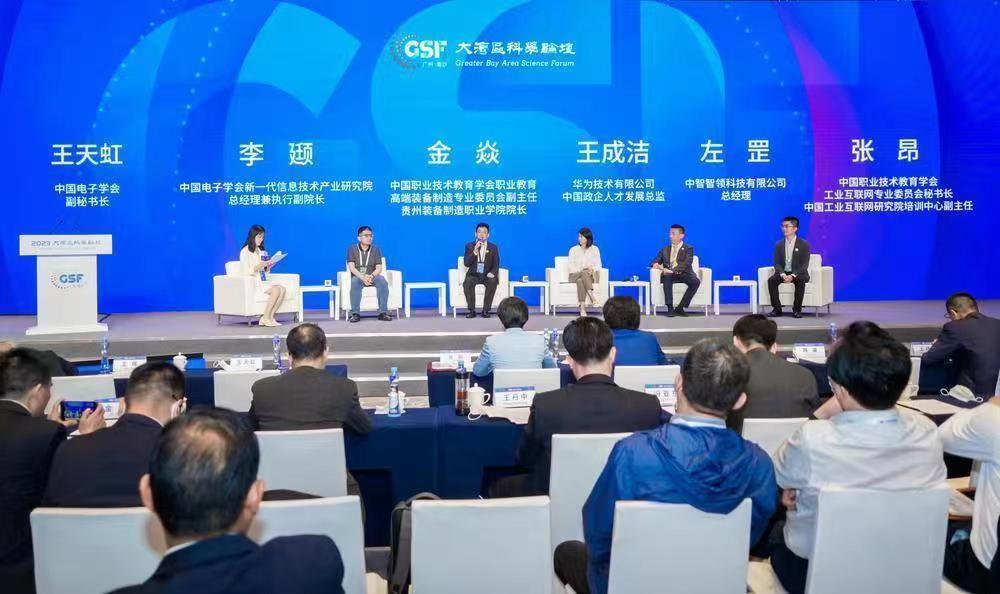This year marks the 10th anniversary of China's proposal to jointly build the Belt and Road initiative. On May 21st, during the opening ceremony of the 2023 Greater Bay Area Science Forum, the Belt and Road High-Quality Development Report: Technological Innovation and Technological Cooperation(the Report for short) was released.

On May 22nd, as the keynote speaker, Dr. Nie Xiaowei, a researcher and executive secretary of the Institute of Qinghai-Tibet Plateau Research at the Chinese Academy of Sciences, presented the research background of the report, the challenges faced by scientific and technological cooperation among countries along the Belt and Road, international trends in scientific and technological cooperation, and the role of technological innovation and cooperation in supporting the high-quality development of the Belt and Road initiative at the Greater Bay Area Science Forum.
The Report mentions that by 2025, breakthroughs will be achieved in key areas of cooperation and cooperative mechanisms, significantly enhancing the role of scientific and technological cooperation in promoting high-quality development of the Belt and Road initiative. By 2035, new mechanisms and models of scientific and technological cooperation will gradually mature, and a new pattern of scientific and technological cooperation in the Belt and Road initiative will be essentially formed. Key areas of cooperation among countries along the Belt and Road include addressing climate change, ecological environment protection, combating major infectious diseases, medical assistance, advancement of medical technology and development of the health industry, information technology development, and collaboration in traditional medicine, among others.
Regarding talent, the Report points out that it is necessary to establish Belt and Road talent development centers to enhance the capacity for nurturing scientific and technological innovation talent within the initiative. It is also important to establish the Belt and Road Young Scientists Training Program to cultivate influential ambassadors for China's high-level science and education. Additionally, the implementation of a selection program for high-level international students studying abroad under the Belt and Road initiative is recommended.
The Report suggests strengthening fundamental scientific cooperation in the unique areas of expertise and advantages of the participating countries. It recommends addressing global and regional ecological and environmental issues through enhanced scientific collaboration, joint research, and technology transfer. The Report also further proposes intensifying research and development as well as technology transfer of advanced and applicable technologies to promote energy conservation and efficient utilization. Simultaneously, it advises deepening international cooperation on "Carbon Peaking and Carbon Neutrality" and achieving carbon neutrality, while jointly advancing the construction of a modern energy system. With the aim of improving the well-being of the people in the participating countries, it recommends enhancing scientific and technological cooperation and technology transfer in the field of livelihood, focusing on addressing the needs of the population.
大湾区科学论坛 | 到2035年,“一带一路”科技合作新格局基本形成
今年正值中国提出共建“一带一路”倡议10周年。5月21日,在2023大湾区科学论坛开幕式上,《“一带一路”高质量发展报告——科技创新与科技合作》(以下简称《报告》)发布。
5月22日,中国科学院青藏高原研究所研究员、所务委员,大湾区科学论坛执行秘书长聂晓伟作为主讲人,介绍了报告的研究背景、沿线国家科技合作面临的挑战、科技合作的国际趋势、科技创新与合作支撑“一带一路”高质量发展等内容。
《报告》提到,到2025年,重点合作领域和合作机制领域取得突破,科技合作对“一带一路”建设高质量发展的促进作用明显提升。到2035年,科技合作新机制和新模式逐步成熟,“一带一路”科技合作新格局基本形成。沿线各国重点合作方向包括应对气候变化、生态环境保护、应对重大传染病、医疗援助、先进医疗技术与健康产业发展、信息化建设与传统医药合作等领域。
在人才方面,《报告》指出,要设立“一带一路”人才培养中心,增强“一带一路”科技创新人才培养能力,要建立“一带一路”青年科学家培养计划,培育中国科教高端形象代言人。同时,要实施“一带一路”高层次留学生选拔计划。
文|羊城晚报全媒体记者 李钢 张豪 邹丽珍 何昱
翻译|卢茂龙
责编|王瑜瑛









